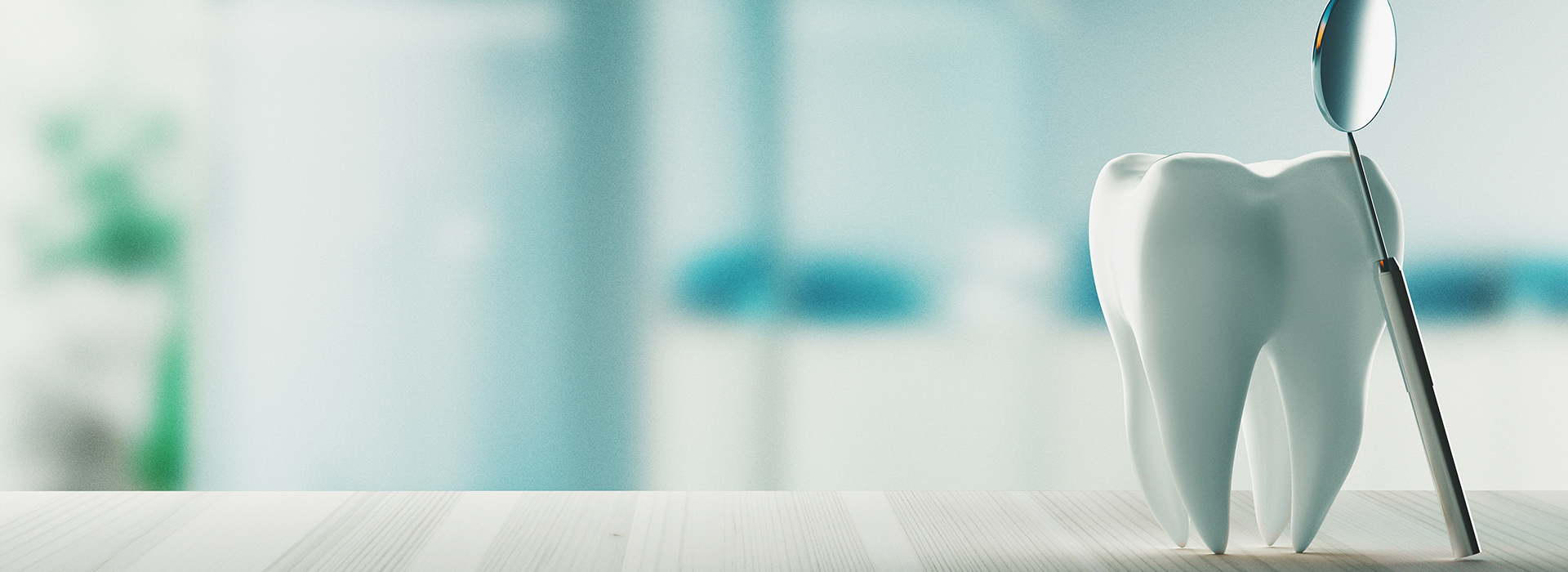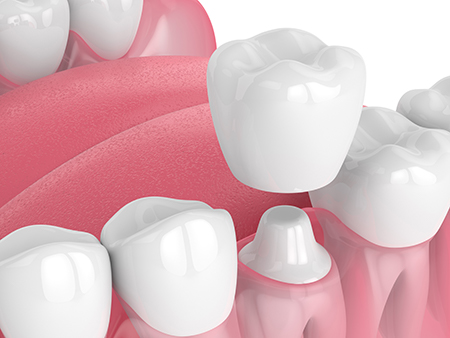Call Us Today!
(248) 863-9109
New Patients
(248) 221-2314

At the office of Royal Dental Center, we combine modern techniques with careful planning to restore teeth so they look and perform naturally. Our approach emphasizes predictable results, gentle care, and materials that balance strength with an attractive appearance.
Teeth can lose structure for many reasons — cavities, cracks, wear from grinding, or the need for a root canal. When a simple filling can’t reliably rebuild a damaged tooth, a full-coverage crown often provides a more durable and stable solution that protects the remaining tooth while restoring chewing function.
Ceramic crowns have evolved dramatically in recent years. Advances in dental ceramics now allow us to offer restorations that are metal-free, highly biocompatible, and capable of matching the subtle translucency and color of natural enamel. Below are key topics to help you understand when ceramic crowns are recommended and what to expect from treatment.
A crown is a cap that fully encases a tooth, restoring its shape, strength, and function. Dentists typically recommend crowns when a tooth has lost too much structure for a conventional filling to be effective. That can happen after extensive decay, following fracture, or when a tooth is weakened by repeated restorations.
Crowns are also commonly used after root canal therapy because treated teeth can become brittle and more prone to breaking. For teeth that serve as support for bridges or that receive implant restorations, crowns play an essential role in creating stable, long-term outcomes that look and feel like natural teeth.
Another reason to consider a crown is cosmetic enhancement. When a tooth is misshapen, deeply discolored, or proportionally small, an all-ceramic crown can provide a predictable way to improve appearance while maintaining function. Our team evaluates each tooth in the context of the whole smile to recommend the most appropriate option.
Indications for crowns often overlap, so treatment planning focuses on the tooth’s remaining structure, the forces it endures, and your cosmetic goals. We weigh these factors carefully to select a restorative plan that minimizes future risk while delivering the best possible aesthetic result.

All-ceramic crowns are metal-free restorations fabricated from modern ceramic materials that mimic the optical properties of natural teeth. Because they interact with light much like enamel, ceramic crowns can achieve a lifelike translucency and depth that older materials struggled to match.
Biocompatibility is another major benefit. Ceramic materials tend to be well tolerated by soft tissues, reducing the risk of irritation around the gumline. For patients with metal sensitivities or those who prefer metal-free dentistry, ceramics offer a reliable and attractive alternative.
Strength has historically been a concern with ceramic restorations, but newer formulations — including high-strength lithium disilicate and contemporary zirconia — provide durability suitable for many clinical situations. These materials resist staining and maintain their color over time, which helps preserve a consistent appearance across the mouth.
Ceramic crowns also allow more conservative preparations in some cases; thinner ceramic options can require less removal of healthy tooth structure compared with metal-backed restorations, which helps preserve the tooth for the long term.

Not all ceramic crowns are the same. The ideal material for a single restoration depends on the tooth’s location, the amount of chewing force it must withstand, and the aesthetic demands of the case. We consider these factors to match material properties to your needs.
For front teeth where appearance matters most, more translucent ceramics such as leucite-reinforced or certain lithium disilicate formulations often provide exceptional color and light transmission. For posterior teeth that endure higher bite forces, monolithic zirconia or high-strength lithium disilicate can offer the necessary durability while still delivering an acceptable appearance.
We also evaluate how the crown will integrate with neighboring teeth and existing restorations. Color matching, margin fit at the gumline, and how the material wears against opposing teeth are all part of the decision-making process to ensure a harmonious, long-lasting outcome.
Our practice stays current with material science and milling technologies so we can select and craft restorations that meet both functional and cosmetic goals. We explain the pros and cons of each option during treatment planning so you can make an informed decision.

The ceramic crown process typically begins with a detailed exam, digital images, and impressions or scans to capture your tooth’s precise shape. Treatment planning includes evaluating bite relationships and adjacent teeth to design a restoration that fits seamlessly into your mouth.
To prepare the tooth, the dentist gently reshapes the surface to make room for the crown while preserving as much healthy structure as possible. A temporary restoration may be placed while a dental laboratory or in-office milling unit fabricates the permanent crown.
At the placement appointment, the crown is trial-fitted, adjusted for comfort and aesthetics, and then bonded or cemented in place with materials chosen for long-term stability. We verify your bite and make final refinements so the restoration performs naturally and comfortably.
Aftercare focuses on routine oral hygiene and regular checkups. With proper maintenance, ceramic crowns can provide years of reliable service. Our team will review care instructions and schedule follow-ups to monitor the restoration over time.
Choosing a provider with experience in both cosmetic and restorative dentistry helps ensure predictable results. Our team balances technical skill with an eye for aesthetics so your crown not only functions well but also complements your smile. We emphasize careful preparation, accurate digital records, and precise laboratory or in-office fabrication.
We tailor every treatment plan to a patient’s unique oral health and personal preferences. That means evaluating the long-term implications of material choices, discussing conservative alternatives when appropriate, and aligning each step with realistic aesthetic goals.
Communication is an important part of care. We take the time to explain options, expected outcomes, and the steps involved in treatment so patients feel informed and confident throughout the process. Our goal is to restore teeth in a way that looks natural and supports oral health for years to come.
If you’d like to learn more about ceramic crowns and whether they’re right for your smile, please contact us for more information.
While a dental filling is designed to replace a portion of a decayed or damaged tooth, a dental crown offers full coverage to restore the tooth’s entire outer surface. A well-fitting dental crown not only protects and strengthens the underlying tooth structure, but it also restores the tooth’s appearance and function.
The procedure for getting an all-ceramic crown is much like the procedure for getting any other type of crown. In all cases, the tooth needs to be prepared, an impression taken, and a permanent crown cemented into place. A single all-ceramic crown can typically be fabricated over the course of two visits. However, with CAD/CAM technology, a same-day crown can be fabricated from start to finish in a single visit. With the first approach, a temporary crown is typically worn until the second visit, when the permanent restoration is placed. As with every treatment plan, our office will explain your best options in care.
As the name implies, a temporary crown is only worn for a short time until the permanent crown is placed. A temporary crown is typically fabricated from durable tooth-colored dental acrylics. While designed to protect the underlying tooth between appointments, and until your new permanent crown gets placed, a temporary crown is also fabricated to look like a natural tooth and maintain the look of your smile.
While you should feel better having an attractive and functional tooth to restore your smile, your tooth may feel a little sensitive following treatment. This initial sensitivity will subside. We take great care to make sure your new restoration looks great, fits well, and your bite is perfect. However, we’re always happy to make any minor adjustments to ensure your comfort.
With some exceptions, teeth with root canal procedures are typically restored and protected from further damage with a full-coverage crown. Based on what’s best for your smile, our office will recommend the most appropriate restoration to maintain the health and longevity of your tooth following a root canal procedure.
A dental crown is a long-term restoration that, if properly cared for, can serve you well for many years to come. Once your new crown is placed, it requires the same brushing, flossing, and periodic checkups as your natural teeth. Avoid biting your fingernails and chewing on hard or sticky objects such as ice, pencils, or taffy, which can damage or loosen your crown. Remember, clenching and grinding your teeth puts excessive pressure on both natural teeth and dental restorations. Unless treated, this habit can compromise the longevity and integrity of your dental work, including crowns.
Although your new all-ceramic crown restores the tooth's strength, form, and function, you can still develop dental disease in the absence of proper care. To prevent gum disease and tooth decay, it’s essential to brush and floss as instructed and see our office for routine checkups, cleanings, and care.
How long a dental crown lasts depends on various factors, including your level of oral care, diet, and oral habits. While the standard answer is that dental crowns can last anywhere from 5 to 15 years, existing literature confirms that most dental crowns remain in place at 15 to 20 years.
At the office of Royal Dental Center, we strive to provide the highest quality of care to address all your dental needs. Once we’ve had the opportunity to examine your smile, we can give you a clear picture of any dental issues that are present, along with a quote for how much treatment will be. The cost of dental crowns can vary a little, depending on the type of crown and its location. Our goals are to provide the highest quality of care and help patients begin treatment without additional financial stress or delay. We’re always happy to answer all your questions on dental insurance coverage, available financing, and payment plans.
Coverage for all-ceramic crowns depends on your dental insurance plan. Today, many dental plans provide some level of coverage for all-ceramic crowns. At the office of Royal Dental Center, we work with patients to optimize their dental benefits and get the care they need to maintain healthy and beautiful smiles!
A ceramic crown is a full-coverage dental restoration made entirely from dental ceramics such as porcelain or zirconia that replaces the visible portion of a damaged tooth. It is designed to restore the tooth's shape, strength and function while matching the color and translucency of surrounding teeth. Ceramic crowns are bonded or cemented over a prepared tooth or attached to an implant abutment to provide long-term protection and support. Because they contain no metal, these restorations are often chosen where appearance and biocompatibility are priorities.
The crown transfers biting forces across the remaining natural tooth structure and helps prevent further fracture or decay by sealing and reinforcing weakened enamel and dentin. Modern ceramic materials interact with light similarly to natural teeth, producing lifelike results for both front and back teeth when selected appropriately. A dentist evaluates the tooth and surrounding tissues to determine the most suitable ceramic material and restoration design.
All-ceramic crowns offer several clinical advantages, including superior aesthetics thanks to their ability to mimic the translucency and luster of natural enamel. They are metal-free, which reduces the risk of a dark margin at the gumline and improves compatibility for patients with metal sensitivities. Advanced ceramics are also highly resistant to staining, helping restorations maintain a natural appearance over time. Many ceramic options can be layered or stained to match adjacent teeth precisely.
Ceramic crowns can require less aggressive tooth reduction with newer high-strength materials, preserving more natural tooth structure when appropriate. They are lightweight and gentle on surrounding soft tissues, contributing to better gum health and patient comfort. When properly designed and placed, ceramic crowns provide durable function suitable for many restorative needs.
Good candidates for ceramic crowns include patients with teeth that are extensively decayed, fractured, or weakened by large fillings or root canal therapy. Crowns are also recommended to restore implant abutments, protect teeth used as bridge anchors, or to improve the shape and color of a misshapen or discolored tooth. A clinical exam and digital imaging allow the dentist to determine whether a crown is the most conservative and predictable option.
Patients with heavy grinding or clenching habits can still receive ceramic crowns, but the choice of material and occlusal design must account for these forces to reduce the risk of chipping or fracture. In some cases, stronger monolithic ceramics such as zirconia or occlusal guards are recommended to protect the restoration. Your dentist will discuss the best approach based on your bite, functional needs, and aesthetic goals.
Several ceramic materials are commonly used for crowns, each with distinct physical and aesthetic properties that influence their clinical application. Lithium disilicate is known for a strong balance of strength and translucency, making it a common choice for anterior and some posterior crowns. Leucite-reinforced ceramics are highly aesthetic and well suited to front teeth with lower occlusal demands.
Zirconia is available in monolithic and high-translucency formulations and is favored for its exceptional strength in posterior restorations and implant-supported crowns. Newer translucent zirconia options improve aesthetics while maintaining high fracture resistance, broadening their indications. Your dentist will recommend a specific material based on tooth location, biting forces and aesthetic priorities to produce a durable, natural-looking result.
A ceramic crown procedure typically begins with a comprehensive evaluation that includes oral examination, digital imaging and shade selection to plan the restoration. If the tooth is infected or requires root canal therapy, that treatment will be completed before crown preparation to ensure a stable foundation. The dentist will also assess bite relationships and the condition of adjacent teeth to design a crown that fits harmoniously into the smile and occlusion.
During preparation, the tooth is shaped to create space for the crown while conserving as much healthy structure as possible; a digital scan or traditional impression captures the tooth geometry for fabrication. Depending on the office workflow, the crown may be fabricated in a dental laboratory or milled on-site with CAD/CAM technology, and a temporary restoration protects the tooth while the final crown is made. Dr. Manal Ismail and the clinical team check fit, contacts and occlusion at the insertion appointment before bonding or cementing the finished ceramic restoration.
After placement the dentist will provide instructions for short-term care and schedule follow-up visits to confirm comfort and function. Minor adjustments are common and are made chairside to optimize bite and contact points. Routine dental visits and professional cleanings support the long-term success of the crown.
Maintaining a ceramic crown starts with consistent oral hygiene practices including thorough twice-daily brushing with a nonabrasive toothpaste and daily flossing around the crown margins. Cleaning at the gumline and between teeth removes plaque that can lead to decay at the crown interface and preserve periodontal health. Avoiding very hard foods or habits such as chewing ice and opening packages with teeth reduces the risk of chipping or damaging the restoration.
Patients who clench or grind should discuss protective options such as a custom night guard to minimize stress on ceramic restorations. Additionally, routine professional exams and cleanings allow the dentist to monitor the crown, polish margins and address any emerging concerns early. Prompt attention to sensitivity, looseness or changes in bite helps prevent more significant problems.
With appropriate care and material selection, ceramic crowns commonly last many years, often in the range of a decade or longer depending on individual factors. Longevity is influenced by the chosen ceramic, location in the mouth, the quality of the underlying tooth and how well plaque and harmful forces are controlled. Regular dental maintenance and timely treatment of surrounding dental disease help maximize life expectancy of the restoration.
Factors that can shorten a crown's service life include untreated decay under the crown, aggressive grinding, poor oral hygiene and traumatic injury to the tooth. When problems arise, options range from repair of localized defects to replacement of the crown to restore optimal form and function. Your dentist will review realistic expectations for lifespan and maintenance based on your oral health and habits.
Ceramic crowns are routinely used on implant abutments to recreate a natural-looking tooth when an implant replaces a missing tooth. In implant restorations, the crown is designed to attach to the abutment and withstand occlusal forces while matching adjacent teeth in color and shape. Material selection and occlusal design are especially important for implant crowns because implants transmit forces differently than natural teeth.
Ceramic crowns also serve as the retainer teeth for fixed dental bridges, where they provide full-coverage support for the pontic that replaces a missing tooth. In bridgework the dentist evaluates the strength of abutment teeth and may choose stronger ceramic materials when higher load-bearing capacity is required. A carefully designed bridge distributes forces across multiple teeth to restore function and preserve oral health.
Potential risks associated with ceramic crowns include fracture or chipping of the ceramic, sensitivity after preparation and the development of marginal gaps if decay or gum recession occurs. Allergic reactions are rare with modern ceramic materials, but gum inflammation or esthetic concerns can occur if margins are poorly positioned. Most complications are manageable when identified early through clinical evaluation and imaging.
To reduce risks the dentist will select an appropriate material and design, adjust the occlusion to eliminate high spots and provide clear home care instructions. In some cases, a different ceramic formulation or a reinforced structure is recommended to better withstand heavy biting forces. If a crown fails it can usually be replaced with a more suitable solution tailored to the patient's needs.
The office of Royal Dental Center combines experienced clinicians, modern materials and digital technology to plan and deliver ceramic crown restorations tailored to each patient. Our team emphasizes individualized treatment planning that balances conservative tooth preparation with durable, esthetic outcomes. We utilize current-generation ceramics and CAD/CAM workflows to provide predictable fit and shade matching for long-lasting, natural-looking results.
During a consultation we review functional needs, aesthetic goals and available material options so patients understand the treatment pathway and expected outcomes. Follow-up care is coordinated by the clinical team to monitor the restoration and address any adjustments or concerns promptly. Contact our office to schedule a crown evaluation and learn which ceramic solution best suits your smile.
Take the first step toward exceptional dental care! Schedule your appointment with Royal Dental Center today and experience personalized treatment, advanced technology, and a caring team dedicated to your comfort and oral health. Don’t wait—your best smile starts now.
